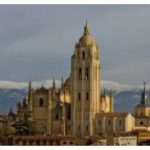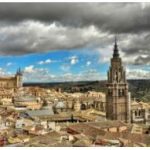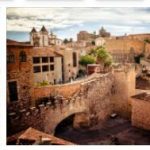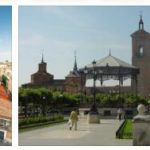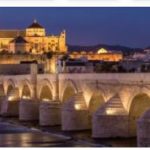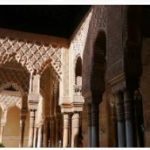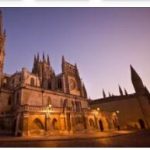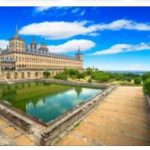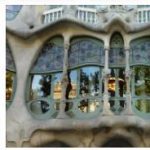The main attraction of Cuenca is the old town, lying on a plateau above the Huécar and Júcar rivers, with its “hanging houses” with balconies floating above the abyss. One of the houses houses the Museum of Spanish Abstract Art, one of the largest collections of modern Spanish art.
Cuenca old town: facts
| Official title: | Old town of Cuenca |
| Cultural monument: | Former festivals of the Caliphate of Cordoba with the famous Casas Colgadas, the “Hanging Houses”, over the gorge of the Río Huécar, the baroque town hall and the Gothic-Norman cathedral with the Byzantine diptych of Our Lady (14th century) and two paintings by El Greco |
| Continent: | Europe |
| Country: | Spain, Castile |
| Location: | Cuenca, Serranía de Cuenca, southwest of Teruel |
| Appointment: | 1996 |
| Meaning: | a very well preserved fortified medieval city with the first Gothic cathedral in Spain |
Old town of Cuenca: history
| 1177 | Recapture of the city under the Castilian King Alfonso VIII (1158-1214) |
| 1190-1257 | Construction of the cathedral |
| 1217-52 | Ferdinand III, the saint |
| 14th century | Construction of the Casas Colgadas |
| 1545-50 | Construction of the Arco de Jamete in the Renaissance style |
| 1762 | Construction of the town hall |
| 1808-13 | Period of the French occupation of Spain |
| 1902 | Collapse of the bell tower, damage to the facade of the cathedral |
| 1998 | Death of the Cuenca-based painter Antonio Saura, representative of “figurative expressionism” and brother of the well-known Spanish film director Carlos Saura |
Medieval skyscrapers
At the time of the Castilian King Alfonso VIII, Christian knights determined to fight took the city held by Moors. This conquest succeeded because the knights – disguised in sheepskins – were able to sneak past the gate guards, at least that’s what an old legend says. The old town experiences a “conquest” of a different kind every Friday around 6 pm: Then young people from the residential areas of the city take possession of the heart of Cuenca. They then own the Plaza Mayor – the free space around the Moorish tower “Torre de Magnana” – and above all San Miguel, an old town quarter named after the small church located there. Hundreds of them besiege the heart of the walled city and its countless taverns and bars, which has remained almost unchanged since the Middle Ages.
If you want to experience fairytale Cuenca, you should definitely stroll through the city before this rush. From two o’clock in the afternoon, when the Spaniards have lunch and then drive away the summer heat by doing nothing, a stroll through the narrow streets is worthwhile. Alfonso VIII entered the city with his religious fighters through the northern city gate. The ruined condition of the Moorish castle located there is not due to the army of this Castilian monarch or today’s youthful vandalism, but to the troops of Napoleon who bombed the fortress. Fortunately, this is the only destruction that Cuenca’s old town has seen in modern times.
Of the Arabic “Conca” that King Alfonso VIII saw, only the city walls and streets and paths of the old town have survived the changing times to this day. The old fortifications can still be clearly seen, especially in San Miguel. It was only within this girdle that the city could initially develop after the conquest by “Christian Spain”, so that due to the limited space it had to be built up quickly. If you stroll from the monastery on the “Ronda de San Julián” footpath with its wonderful view of the surrounding mountains in the direction of Plaza Mayor, you will come across the “Hanging Houses” and “Skyscrapers”. These most important examples of medieval urban architecture were built between the 12th and 14th centuries, a closed facade of around 30 houses that extends into the gorge of the Huécar river.
One of these buildings houses the Museum of Abstract Art, once the private collection of the painter Fernando Zobel, with works by Antoni Tápies, Eduardo Chillida and Antonio Saura. Medieval Cuenca evidently attracts modern arts: the former Carmelite monastery on Ronda Julián Romero houses the “Antonio Pérez Foundation” with modern paintings and the International Museum of Electrographic Art. Traditionally at Easter the “Week of Religious Music” takes place with concerts in numerous churches and in the modern auditorium at the foot of the old town.
Directly at the Plaza Mayor, the visitor comes across the first Gothic cathedral in Spain. According to internetsailors, already in 1182 Alfons VIII ordered the construction of a large three-aisled church, presumably above the mosque of that time. Under Ferdinand III. the first, Gothic facade was added. A second exterior facade, erected in the 17th century, was destroyed three centuries later when the church’s bell tower collapsed on the facade. Then it was decided to build a new facade in neo-Gothic style. However, as the funds were soon exhausted, the building still looks a bit unfinished today.
During Easter week, the young people of Cuenca stand out in the cityscape. They are the protagonists of the »Path of Sorrows«, which – in the tradition of the irreverent Spanish picaresque novel – is better known in Spain as the »Procession of the Drunk«. It is increasingly forgotten that the »Semana Santa« as a passion play is a total work of art in which the city becomes a daily backdrop.

